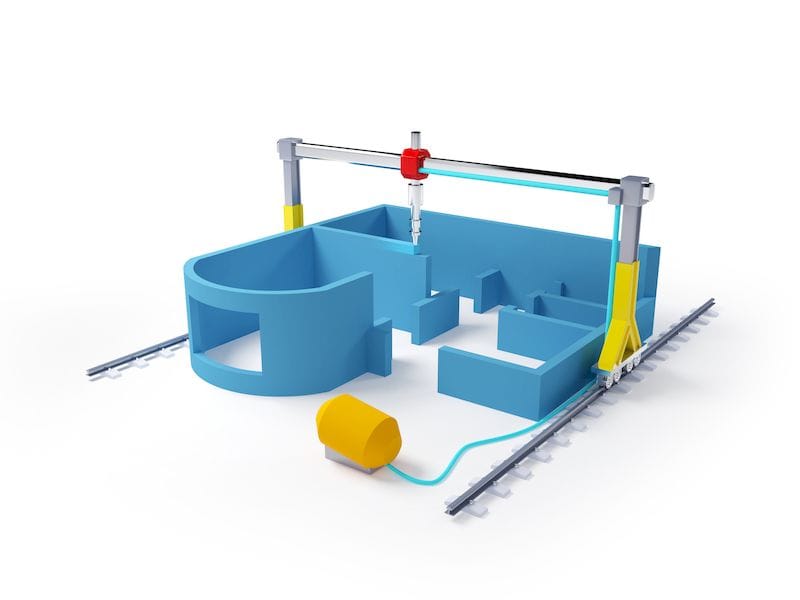
Now that we’re no longer confined to printing in two dimensions, the opportunities are almost endless for many businesses that rely on manufacturing and design.
Many industries look to adopt 3D printing in some capacity over the next few years, while others see potentially drastic changes on the horizon. One such niche that belongs to this latter group is real estate.
So what does this mean for the real estate and development industries specifically? It’s an excellent question, with some still-hazy answers. As the dust begins to settle on the applications of 3D printing in this space, some of those answers have stepped forward.
3D Tech: Disruptive Now and in Future
Few disagree that 3D printing represents a huge disruption in how we currently fabricate and manufacture a huge variety of objects and structures, including homes, offices and commercial spaces. The big question is if (or perhaps more accurately, when) mass adoption is a realistic option for developers.
3D printing in this space is still, however, in its relative infancy. As Illinois MakerLab Executive Director Aric Rindfleisch told the National Association of Realtors, “It’s still very early. We’re probably back to where the computer industry was in 1982.”
Nevertheless, even seeing it on the horizon has many prognosticators in an uproar. Upcoming completion of offices, in addition to predictions that we will see the beginning of large-scale printing of homes in the next 5-10 years, both undeniably foreshadow major change.
Positive, Negative, or Just Different?
In some ways, this disruptive technology will impact economies negatively, reducing manufacturing jobs and labor. Some expect machinists and construction workers to feel a pinch in the short term. That pinch may not, however, be as sharp as we might first imagine. Considering the current extreme shortage of construction labor, existing construction workers may still have plenty of work.
Moreover, machinists can in time transition to working with 3D technology instead.
Considering that both work with computerized designs transferred to physical materials through the use of technology, the jump shouldn’t be too difficult in theory.
On the other end, 3D printing will likely create jobs in the design field. Designers will face increasing demand as the world clamors for designs to feed into ever-cheaper 3D printing systems. They may work for contractors, government organizations and NGOs, but they may also work for private citizens, who can now afford to hire them for homes printed on demand.
In addition, the 3D printing prices substantially cuts down on waste. Instead of starting with wholesale resources and cutting them down to the shapes and sizes that match blueprint specifications, developers and builders can cut down on costs significantly by knowing almost exactly the volume of materials needed.
Other Benefits of “Disruptive” 3D Printing Technology for Buildings
The potential benefits of 3D printing extend far beyond materials and labor. The list includes, but is far from limited to:
- Giving builders access to previously inaccessible areas, such as dense urban centers where it is currently impossible to set up a crane or other heavy equipment
- Enabling the eventual printing of internal structures as well as walls, e.g. plumbing, electrical systems, venting and so forth
- Offering those who would otherwise be unable to purchase a home much cheaper (smaller/simplified) options — traditional home construction tends to forget affordable housing due to thin profit margins
- Giving homebuyers and businesses the option to design their own creative buildings
Perhaps most importantly, 3D printing seems to offer solutions to the housing crisis, poised to offer the current 1 billion people who live in slums to achieve a far higher standard of living.
What about realtors, whose jobs depend on buying and selling property? Their concern is reasonable: Will people still need their services when everything can be printed on demand? Once built, these homes will still trade hands. It’s very unlikely that 3D printing will kill realty as a profession, for the simple reason that people will always move around.
Looking to the Future
While the development space is due for disruption, major changes are still a long way away. Adjustments will likely be gradual, but companies that adopt 3D printing in the right ways at the right times will be positioning themselves well for the future.

